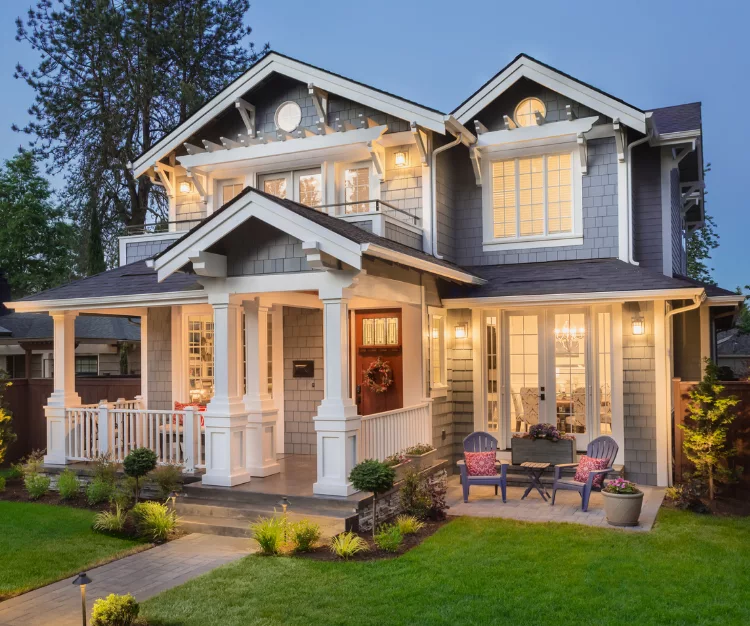What’s the Difference Between Porches, Decks, and Patios?

So you want more outdoor living space, but you aren’t sure what kind of space best fits your home and budget? Let’s get clear on what your options are:
Porches: Attached and Covered
While there are quite a few types of porches, what they all have in common is that they are attached to your house or building by a roof. Here’s how they differ:
- Open porches and farmer’s porches typically extend across the entire length of the front of a house. An open porch, as the name suggests, is completely open to the outside environment. A farmer’s porch, on the other hand, uses support beams, columns, and railings to create an entertainment space for larger groups of people to congregate.
- A front entry porch is much smaller than the porches mentioned above, only a few feet wider than the front door of a house, and usually a step or two up from the front walkway. You may also hear this called a portico, which is a specific style of front porch using support columns.
- A screened-in or 3-season porch is often attached to the back entrance of a home and is entirely enclosed by screens. It’s larger than a front entry porch, and can even act as an additional living space as it is protected from the elements.
Patios: Ground-level and Uncovered
Whether at the front or the back of a house, a patio is a ground-level paved area typically used for outdoor dining, lounging, and late-night marshmallow roasting. What makes a patio unique is the material you choose.
- Concrete patios can be formed into nearly any shape you please and can be stamped to look like uniform tiles, naturally worn flagstone, brick, and even wooden deck boards.
- Paver patios can be made out of an assortment of concrete or brick and laid into interesting patterns. Check out our outdoor living project highlighting a beautiful new deck and a paver patio!
- Flagstone patios embrace the natural look of stone and are often laid so their organic, irregular shapes are paid off. While more expensive to install, natural stone weathers well and needs little upkeep.
- Gravel patios are gaining popularity in the US. They are inexpensive to install, and often homeowners can do it themselves. They are also naturally good for drainage.
Decks: Up, Down, and All-Around
Usually made out of lumber, decks are uncovered flat surfaces around the outside of a home. Decks aren’t necessarily attached to the house, though many typically come off the back of the house and allow for an entertaining space. Decks are also common around pools, and on balconies and rooftops. There are even multi-level decks. The most popular choices for decking materials in New England are:
- Cedar, Redwood, and other pressure-treated woods, which are inexpensive and last for decades
- Ipe, Tigerwood, and other Exotic Woods which are more expensive, but highly durable and add a beautiful flair
- Composite, which is a durable material made of wood particles and polyethylene and costs about the same as vinyl
Perhaps the hardest part of adding a porch, patio, or deck onto your home is knowing what to call the look your want. Is there a roof on your outdoor extension, or is it open to the air? What’s the material underfoot? Answer these two questions, and you’ll be on your way to building the outdoor space of your dreams.
Give us a call and we can discuss all options, and point you in the right direction 617-969-4900
CHECK OUT
Related Projects
READ OUR
Related Ideas
Locations












